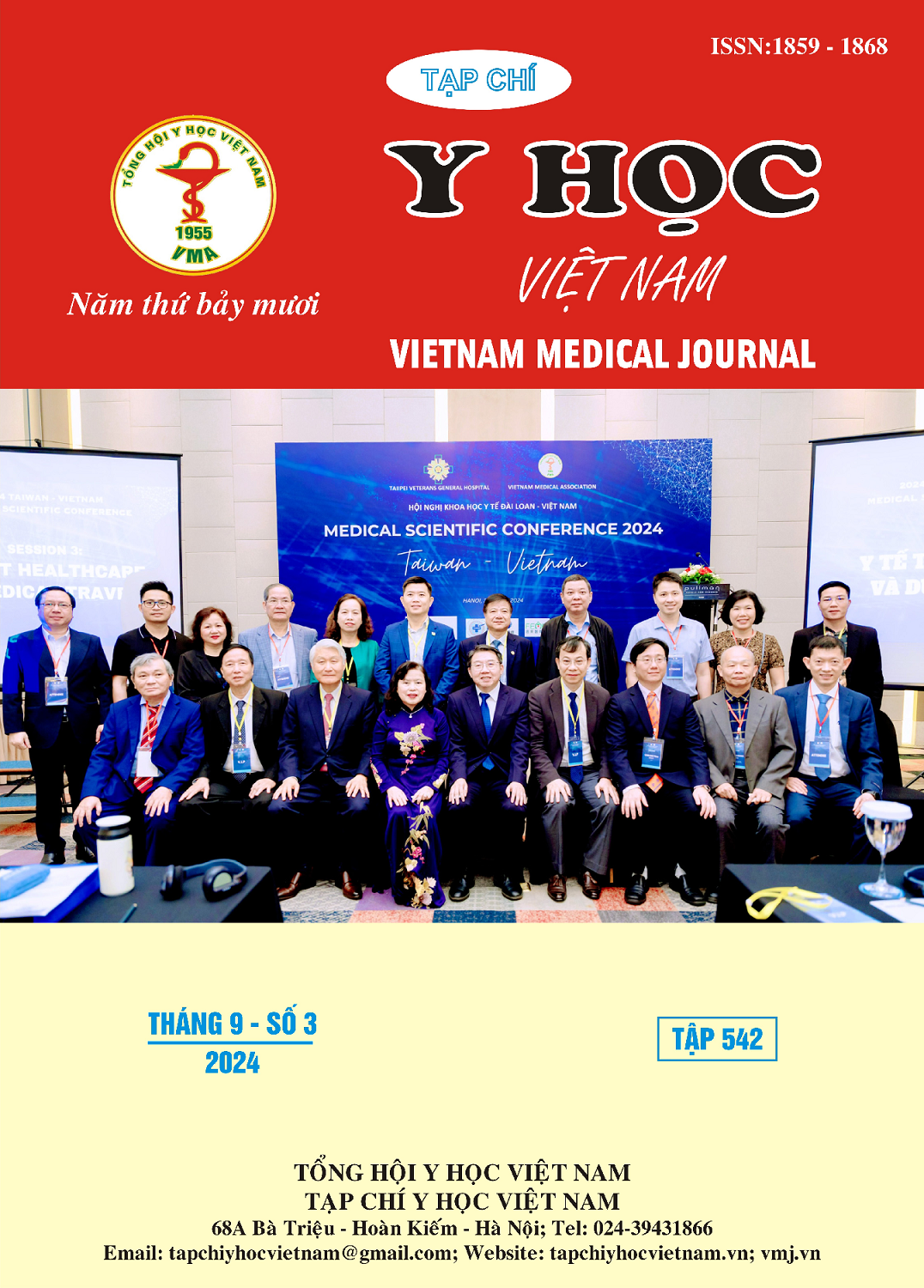RATE OF MEDICINES PRESCRIBED FOR OUTPATIENT TREATMENT FOR CHRONIC RENAL FAILURE PATIENTS WITH DIABETES AT LONG AN PROVINCE GENERAL HOSPITAL IN 2023
Main Article Content
Abstract
Objective: Determine the rate of drugs prescribed for chronic kidney failure patients with diabetes treated as outpatients at Long An Provincial General Hospital in 2023. Subjects and methods: cross-sectional descriptive study. Conducted research on 360 medical records and 250 prescriptions of STD patients with diabetes treated as outpatients at the Department of Internal Medicine of Long An Provincial General Hospital from January 1, 2023 to December 31, 2023. Results: The most commonly used hypoglycemic drugs are biguanide (43.3%), insulin (40.8%), sulfonylurea (38.8%). The most commonly used drug groups are calcium channel blockers (41.2%), ARBs (32.2%), diuretics (27.5%), and ACEIs (26.4%). Antihypertensive drug combinations with ACEI/ARB account for a high proportion (56.9%), but the rate of use with ACEI/ARB is different in stages of chronic kidney failure. Most patients used statins (53.6%), of which atorvastatin was used the most (52.5%). The proportion of CKD patients with diabetes using drugs to treat anemia was 31.7% and the rate of using drugs to treat anemia increased with statistical significance according to CKD stage, from 0 0% in stage 1 to 62.5% in stage 4. Conclusion: Chronic kidney failure patients with diabetes treated as outpatients often use a combination of drugs such as hypoglycemia, hypotension, lowering blood fat, group of drugs to treat anemia.
Article Details
Keywords
chronic kidney failure with diabetes, outpatient treatment, proportion of prescribed drugs
References
2. Tổ chức Y tế Thế giới (2005), Hướng dẫn kê đơn tốt, Chương trình hành động về thuốc thiết yếu, tr. 6-52.
3. Trần Văn Vũ (2015), “Đánh giá tình trạng dinh dưỡng ở bệnh nhân bệnh thận mạn”, Luận án tiến sĩ y học, TP. Hồ Chí Minh, tr. 35-38.
4. Koro C.E., Lee B.H., Bowlin S.J. (2016), “Antidiabetic medication use and prevalence of chronic kidney disease among patients with type 2 diabetes mellitus in the United States”, Clinical therapeutics, 31(11), pp. 2608-2617.
5. National Kidney Foundation (2012), “KDOQI clinical practice guideline for diabetes and CKD: 2012 update”, American Journal of Kidney Diseases, 60(5), pp. 850-886.
6. Ioannidis I. (2019), “Diabetes treatment in patients with renal disease: Is the landscape clear enough?”, World journal of diabetes, 5(5), pp. 651–658
7. Mogensen C.E. (2020), “Long-term antihypertensive treatment inhibiting progression of diabetic nephropathy” update 2020, British Medical Journal, 285(6343), pp. 685-688.
8. Parving H.H., Andersen A.R., Smidt U.M. (1987), “Effect of antihypertensive treatment on kidney function in diabetic nephropathy”, British Medical Journal, 294(6585), pp. 1443–1447.
9. Levin A., Rocco M. (2007), “KDOQI clinical practice guidelines and clinical practice recommendations for diabetes and chronic kidney disease”, American Journal of Kidney Diseases, 49(2), pp. S10-S179.
10. Maurizio Li Vecchi, Fuiano, Francesco M., Mancuso D. (2007), “Prevalence and severity of anaemia in patients with typ 2 diabetic nephropathy and different degrees of chronic renal insufficiency”, Nephron Clinical Practice, 105(2), pp. c62–c67.


